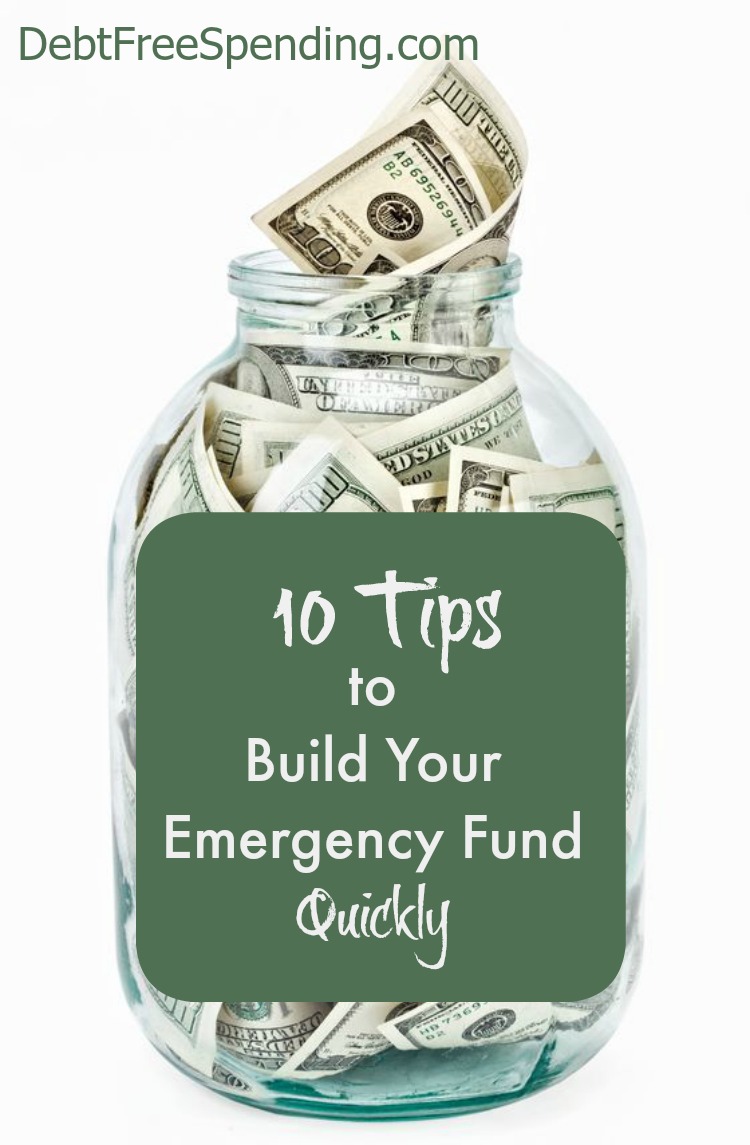
Photo Credit: Copyright: hamsterman / 123RF Stock Photo
Life is like a winding road with many twists and turns, and sometimes it throws things at you that you don’t expect. Unexpected emergencies happen everyday, and everyone should have an Emergency Fund to weather that storm. Many people end up in debt because they don’t have a fund, and when they hit rough patches, they end up going into debt to cover these expenses. An emergency fund should have three to six months of living expenses, however, even focusing on saving an extra thousand dollars can help keep you out of debt.
10 Ways to Build Your Emergency Fund Quickly
1. Go on a Spending Freeze. We have a 31-day self-led Spending Freeze that you can read through at your convenience. All of the money that you save during the freeze should go into your Emergency Fund account. We had over two hundred people go through the freeze with us the first time, and they were able to save significant amounts to contribute to their Emergency Fund.
2. Pick up a Side Hustle. Check out our Top Side Hustles that helped us get out of debt and build our emergency fund. We also have 50 Side Hustles that will help give you ideas on how you can pick up an extra job or as we call it “side hustle” to save for your emergency fund. The nice thing about a side hustle, is that if you are living by a budget, and this is truly extra money coming in that you don’t spend, then you should be able to build your fund very, very quickly.
3. Sell Items You No Longer Use. I recently took in several pieces of clothing to our local consignment shop for children’s clothing and scored cash on the spot. I also love to sell items in my local yard sale Facebook group. While can still have a traditional yard sale (check out our post on How to Have the Best Yard Sale Ever), I like to use the Facebook group for the winter months. We only have about four good yard sale months in Pennsylvania. Take the money you receive from the sale of these items and put it in your emergency fund instead of spending it on something else you probably don’t need.
4. Make Items You Need. We make so many items at home with our Young Living Essential Oils. We make our own deodorant, lip balm, diaper cream, and more. Check out all of our essential oil product posts. We also make our own baby wipes and more, so check out all of our DIY posts as well, and start making things at home for less. Estimate the money you think you are saving and place this money in your emergency fund.
5. Barter or Borrow What You Need. We have a whole post about how to barter, and this is just one way to create extra money in your budget that you can save in your emergency fund. I have tutored for a relative who cuts my hair, which saved me about $100 a month, which I could easily put in my emergency fund. We started borrowing books from the library for my son, now that he is older, and he read through six books in the last month, which would have cost me over $40 to purchase in the store, that could go straight into my fund.
6. Use a Weekly Meal Plan. By having a weekly meal plan, you will eliminate eating out entirely. You will also save money by packing snacks, drinks, and anything else you need wherever you go. Commit to eliminating all extra food expenses for at least a month and place the extra savings in your emergency fund.
7. Use the “You Saved” Receipt Method. My former math teacher taught me how to do this. Everytime she gets a receipt from the store that says “You Saved……” she places that amount in a savings account. She did this mostly by shopping with coupons for toiletries and food items. In just a few years she saved over $30,000 and took her entire family on a cruise to Alaska. Place the “you saved” amount in your emergency fund.
8. Keep the Fun at Home. Eliminate all entertainment expenses from your budget, and find frugal ways to have fun at home. Check out our post on Frugal Entertainment Ideas for Families. We also have a great post on Frugal or Free Date Night Ideas. Make sure to put the money you saved in your fund.
9. Walk or Bike. If there are places in town that are close enough for you to walk or bike, do it for one month. Calculate your miles, and pay yourself $0.55 for each mile you walk or bike (The current mileage rate at my job), and put that money in your emergency fund.
10. Cash in Your Change Jar. We did this recently to pay off a bill, and we had over $200 in change. Many times we don’t realize how much silver is in our change jar. This would give you a nice start towards your $1,000 starting goal.
Do you have any ideas on how to save for your emergency fund? Comment them below!

Leave a Reply